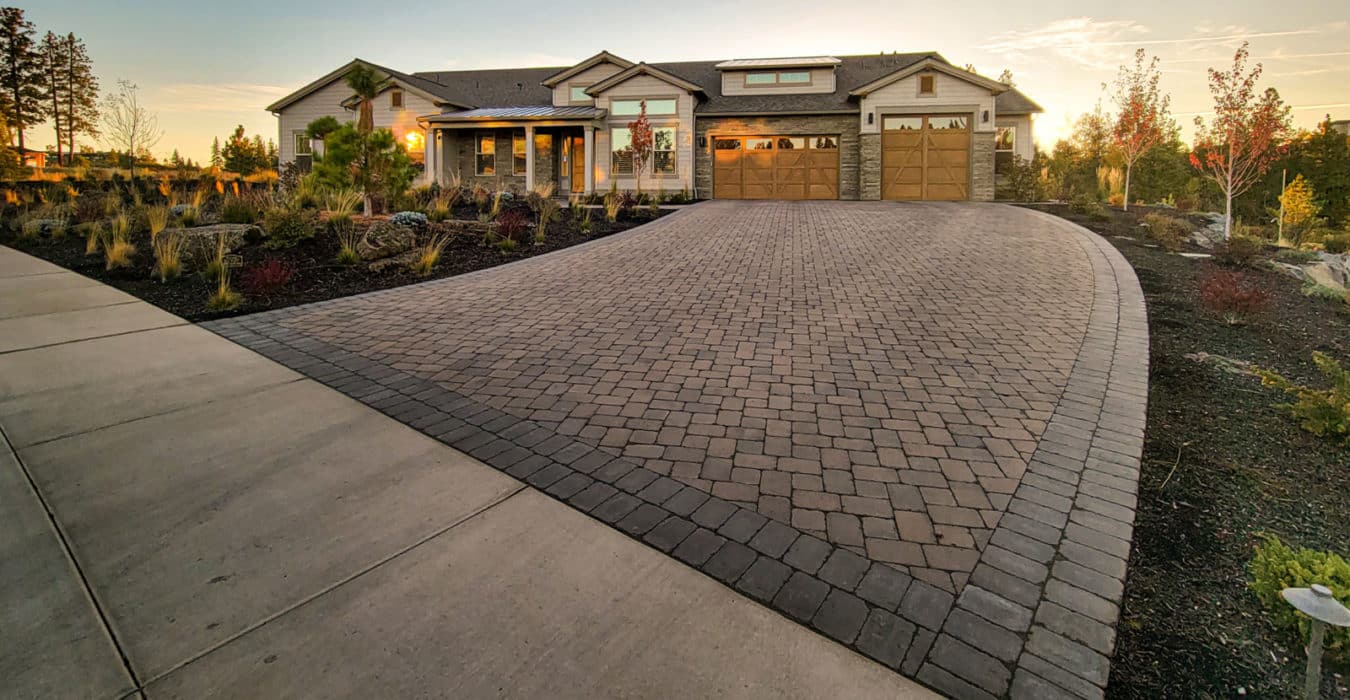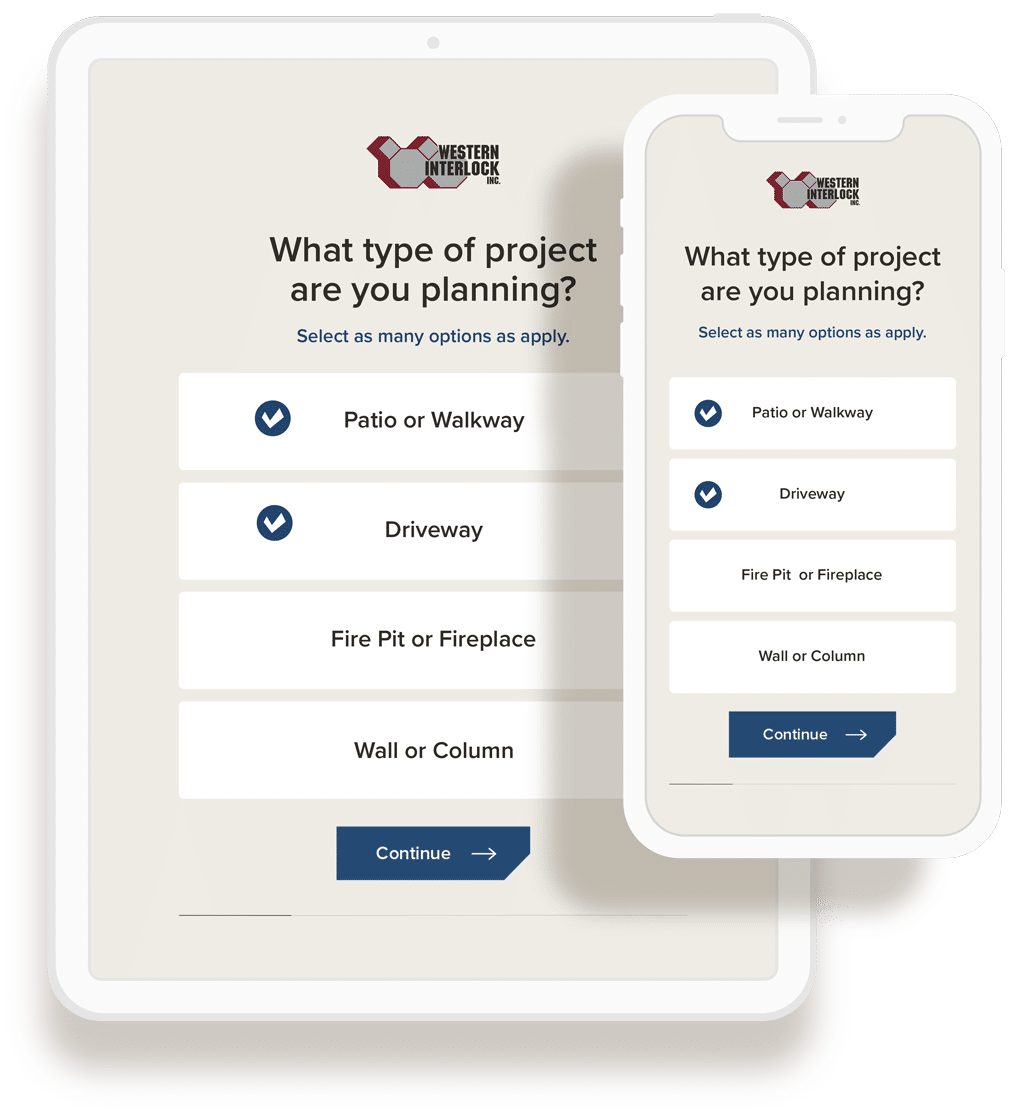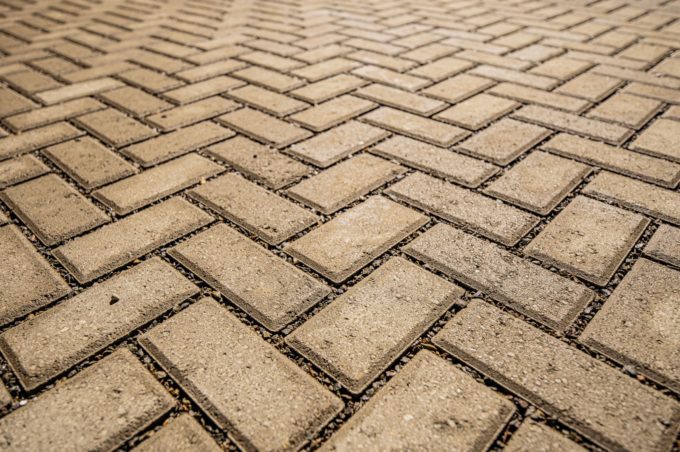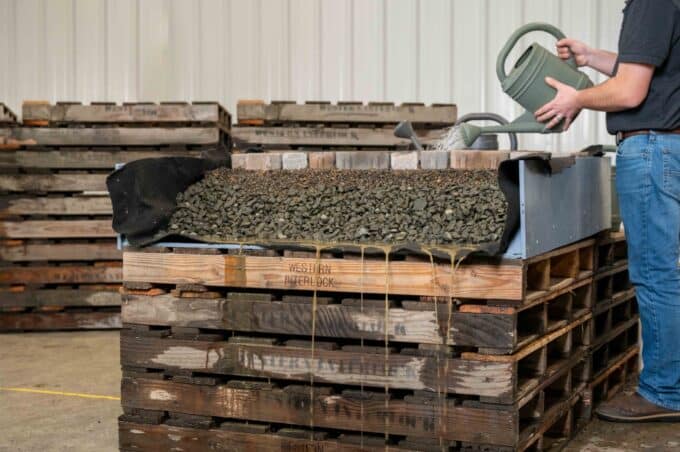Get our FREE Project Planning Guide
"*" indicates required fields
Pavers are not all made the same! Every paver is different, as you’ve likely discovered if you have done some paver research or recently started a project. You can choose between different colors, textures, materials … and sizes, which is the focus of this article.
The range between small and large pavers can be pretty extreme. So how do you know what size is best for your paver project? You’ll want to consider three main aspects: purpose, space, and setting.
How big is a large paver? How about medium or small?
When we say “large” pavers, what exactly do we mean?
Most standard pavers are 50 mm thick, regardless of length and width. However, pavers can get up to 914.4 mm (three feet) in size.
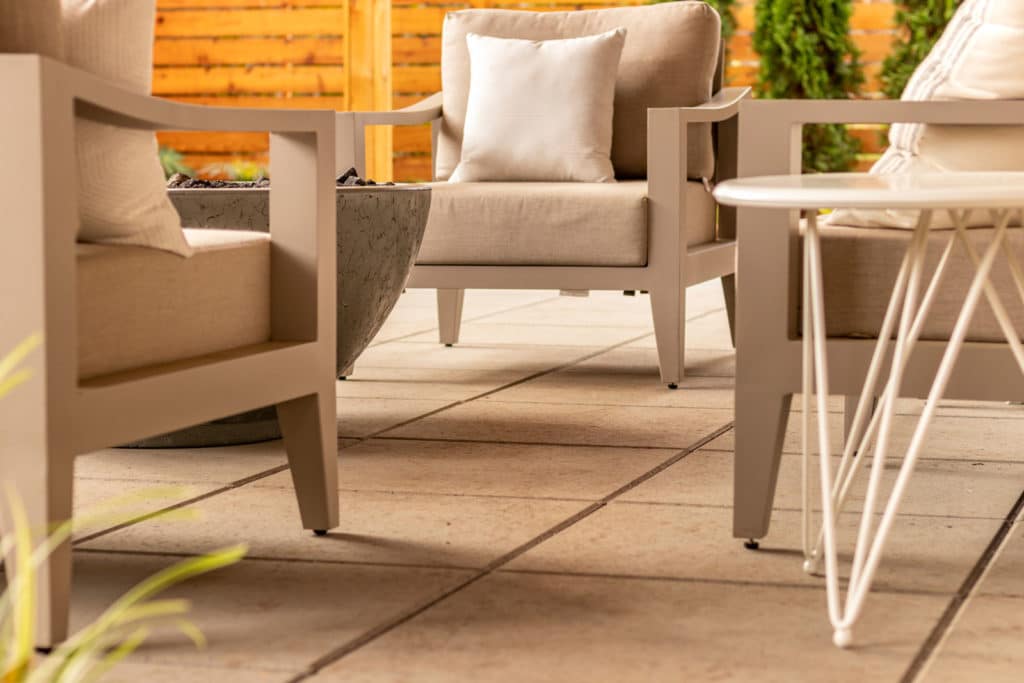
A large paver is anything at or above 500 mm, such as our La Lastra pavers. Medium pavers are anything 300 to 500 mm, such as our Double Park pavers. And finally, a small paver is anything less than 300 mm, such as our Plaza Stone.
Paver Size Consideration #1: Traffic
What must you consider as you settle on the proper size for your pavers? The first consideration should be the amount of traffic those pavers will receive daily.
Unlike what you might think, smaller pavers deliver a more flexible surface. They are less prone to damage caused by ground movement underneath—or any weight on top.
Best pavers for traffic
Our most durable pavers under heavy traffic are Interstone and Villa Stone. Both have small surface areas and are exceptionally tall (or thick). A large side surface area in both creates the most reliable interlock. If you use an 80 mm variant of these pavers, you could turn equipment as heavy as a bulldozer around on them without any effect or damage.
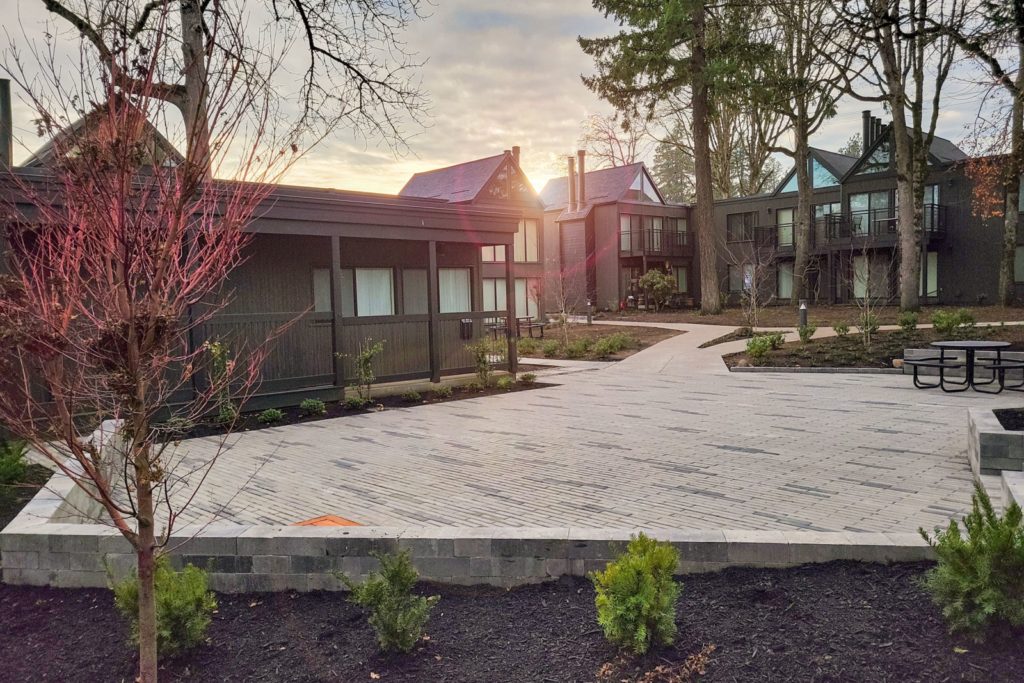
Larger pavers have more surface area per stone than their thickness (typically 50 mm), meaning they are more fragile. These large-format pavers are only suitable for foot and bike traffic.
Paver Size Consideration #2: Style
As you consider the best paver size for your project, you must also factor in paver style. Different paver sizes have different feelings to them.
Small pavers are understated and classic; they create an intimate and tranquil setting. They also give you greater flexibility in design and can make a small-scale patio feel more spacious.
On the other hand, large pavers are more modern and bold, bringing a feeling of elegance to an outdoor living space. They have a heavier footprint, which can actually make a smaller area feel more closed.
Paver Size Consideration #3: Space
The space you work with is a significant factor in your paver size choice.
If you are planning for an outdoor kitchen or dining area, opt for the practicality of large pavers. They clean up beautifully, and their larger size provides a smoother and more stable base for quickly moving outdoor furniture.
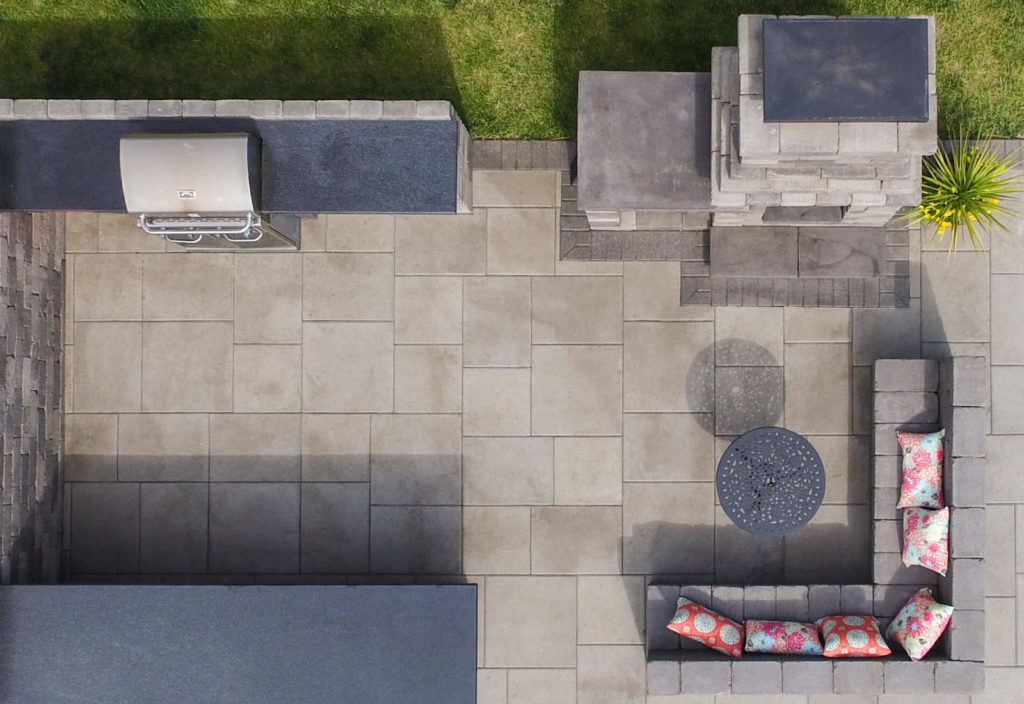
If you will install a driveway or parking extension, go with smaller pavers that can handle the weight of vehicles.
If you are planning a pool deck area, use smooth and large pavers. They offer a sleek and expansive appearance and are ideal for bare feet.
Still unsure what paver size to use? Try a blended pattern.
If you are not confident about which paver size would be best for your project, you can also choose to go with both formats and get the best of both worlds.
A great example of a blended format is our Leiden paver which uses five small and medium sizes to give complexity and depth. The pattern options are endless; you could use many variations to obtain different looks.
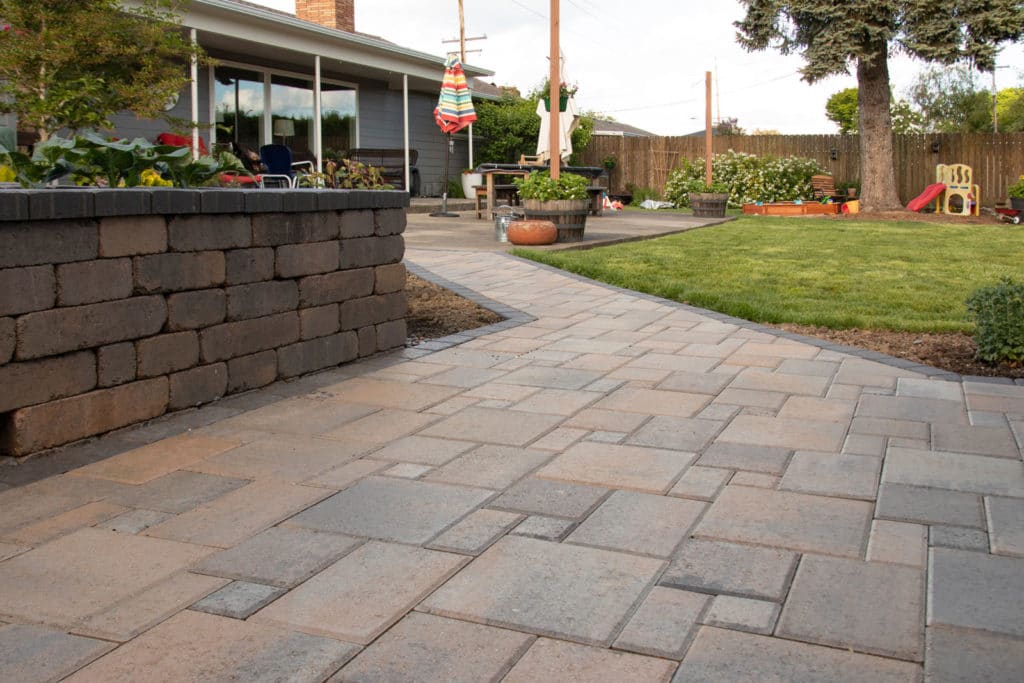
Other blended paver size options include our La Pietra Quattro (it has a textured finish) and our La Pietra Moderna (with a smooth finish). Both of them use five sizes, ranging from small to large.
Download our Project Planning Guide
If you need the virtual version of professional help in planning your paver sizes or entire paver project, you can download our free PDF. This Project Planning Guide will give you all the information you need to know as you plan the details of your new hardscape.
Get our FREE Project Planning Guide
Tell us where to send it and we’ll email the backyard planning guide to you right away!
"*" indicates required fields


